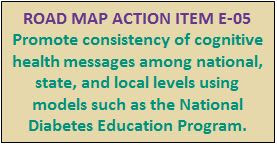Thousands of people will get the flu this year in the United States. But by knowing the steps to avoid getting sick, we can have a safer flu season — and you and your family can stay healthy.
How to prevent the flu
The flu is a virus. It can get inside you and make you sick. Flu is spread by coughing, sneezing and close contact. It can stay alive on a lot of surfaces.
Wash your hands with soap and water and scrub for at least 20 seconds, which is about how long it takes to sing the “Happy Birthday” song twice.
Flu symptoms can include fever, cough, runny or stuffy nose, fatigue, headache, sore throat, vomiting and diarrhea. Call your doctor if you’re very sick or worried about your illness.
The flu is caused by a virus, so antibiotics won’t work. You can treat your fever and cough with medicines you can buy at the store.
For some people, the flu can be very dangerous. In fact, the flu causes thousands of deaths every year in the United States, mostly among seniors.
The best way to avoid the flu is by getting your flu vaccination every year. Just because you got a flu shot last year doesn’t mean you’re protected this year. Flu vaccinations protect you from several kinds of flu. And remember: You can’t catch the flu from a flu shot.
Vaccines are available by a nasal spray or injection. The Centers for Disease Control and Prevention recommends that everyone 6 months or older get a flu shot each year. But don’t get a flu shot if you have an allergy or other condition that might make it unsafe. Ask your doctor if a flu vaccination is safe for you.
Another easy way to help prevent the spread of flu is by washing your hands. Avoid touching your face, nose, mouth and eyes throughout the day and wash your hands often.
What are the symptoms of flu? What if I get sick?
If you think you have the flu, help keep your friends and coworkers safe by staying home while you’re sick. Stay away from other people in your house, too, so you don’t get them sick. Cover your coughs and sneezes with a tissue.
While you’re home, make sure to get plenty of rest. Drink a lot of fluids. You should stay home for at least 24 hours after your fever is gone.
What about treatment?
However, your doctor may also prescribe antiviral medications. These medicines slow down the virus inside your body. Antiviral drugs are available through your pharmacist with a prescription from your doctor. Check with your doctor to see if they might be an option for you.
Other supplies you may want to have near you when you are home with the flu include tissues, a wastebasket with a lid and plastic liner, a thermometer, a humidifier and water.
Who is at high risk for flu complications?
Other people at high risk from flu complications are young children, pregnant women and people with certain medical conditions, such as asthma, diabetes and heart disease. But people of any age can get very sick from the flu, which is why vaccination is so important.
 The Public Health Road Map, a guide for public health officials to promote cognitive health – which was jointly developed by the Centers for Disease Control and Prevention’s Healthy Aging Program and the Alzheimer’s Association – encourages integrating brain health messages into existing prevention and awareness campaigns. Since many cardiovascular risk factors – including obesity – are modifiable, incorporating cognition concerns into existing obesity prevention and control campaigns and/or heart health efforts may not only improve cardiovascular outcomes but also future cognitive decline.
The Public Health Road Map, a guide for public health officials to promote cognitive health – which was jointly developed by the Centers for Disease Control and Prevention’s Healthy Aging Program and the Alzheimer’s Association – encourages integrating brain health messages into existing prevention and awareness campaigns. Since many cardiovascular risk factors – including obesity – are modifiable, incorporating cognition concerns into existing obesity prevention and control campaigns and/or heart health efforts may not only improve cardiovascular outcomes but also future cognitive decline. 





